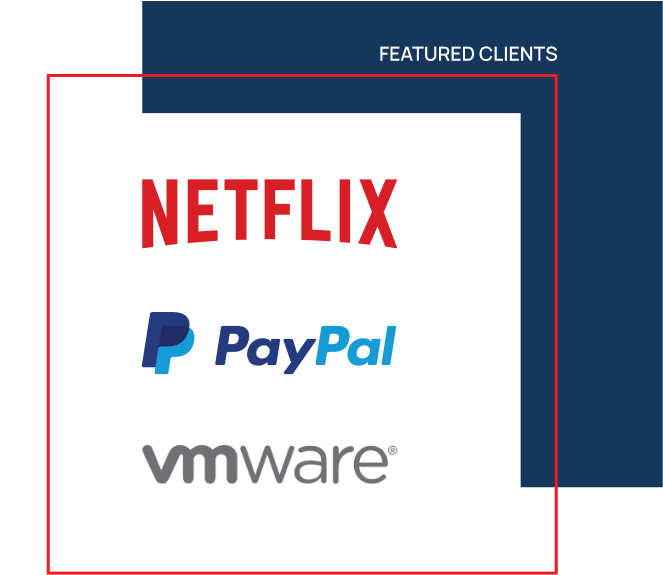We’ve worked with startups and the world's largest companies. We provided them with the solutions which suit their needs.

<p>Hobby Local promotes hobby classes and continuing education in Austin, TX. They wanted a site which could reduce their administrative work by letting instructors manage their own profile and classes. They also wanted a simple-to-use search interface where students can filter classes based on keyword, category, distance from their own place, day of the week and start date. Student should be able to register for a class by completing a standard e-commerce checkout process.</p>
<p>We used Profile 2 module for letting the instructors manage their own profile. The limitation of this module that one can only create one profile of each type. Hobby Local wanted a system where a head instructor could manage profiles of instructors working with him. As a result, we had to extend Profile 2 module to provide this functionality. We used Drupal Commerce to provide the e-commerce functionality.</p>
<p>The most difficult part of this project was calculating the driving distance of each class from every user that comes on the site and letting her filter the classes based on this distance. And we needed to do this in real time! We accomplished this challenge by making an innovative use of caching and cron. Every time a user comes to the site, we identify its approximate location (latitude and longitude) using the MaxMind geolocation database. Next we calculate the straight-line distance of this user from each class using Haversine distance formula. At the same time, we kick of a background process to get the driving distance using GMap API. We needed to do this in background so that API calls won't slow down the site. As soon as we get the driving distance based from GMap, we would replace the Haversine distance by driving distance.</p>
<p>Hobby Local loved this website which is way better than their competition and have got great reviews from their fans about it.</p>
Read More About Hobby Local

<p>VMware, client of Clarus Agency, publishes white papers on virtualization technology very regularly. Each white paper has many different pieces of content, which are written by different authors and reviewed by different reviewers. They wanted to create a system to centralize this white paper creation process.</p>
<p>The administrators within VMware were allowed to create initial documents and would ask the authors to fill in the content. Multiple authors are assigned to each document and they create the content within that document. Each content could be in a different state (created, reviewed, approved, published, etc.) at the same time and would go through its own workflow. The document should show only the published content within it to external users at any given time.</p>
<p>VMware also wanted the ability to change the layout of the document at any time and that should reflect in the pdf generated in real time.</p>
<p>To create this platform, we used Organic Groups which gives us the ability to create groups around documents and add users with different roles to that document. We could also attach content pieces to each Organic Group. Organic Groups also gives us the option to theme each document differently and to change the layout any time. Since the workflow for each content was very complicated, we needed to use both Revisioning and Workflow module and had to write a custom module to glue them together. This project used a lot of AJAX to display the content revisions in the form of Facebook timeline.</p>
<p>In the end, VMware was very happy with the work and were delighted to have a system which could manage their workflow exactly how they wanted it.</p>
Read More About VMware

<p>PayPal was facing the problem of low employee engagement on their central intranet site which was built on top of Sharepoint. They wanted to upgrade it so that they could have <span style="font-size: 13px; line-height: 20.006303787231445px;">modern UI/UX for employees and </span><span style="font-size: 13px; line-height: 20.006303787231445px;">a better publishing experience for the editors along with enterprise search capabilities.</span></p>
<h2>Modern UI/UX</h2>
<p>To provide user experience that is not confined by limitations of Drupal theming, we decided to create the site using headless Drupal. The front-end was created using Node.js and AngularJS. Front-end commuicated with the back-end Drupal using APIs, that were created using the Services module.</p>
<h2>Publishing Experience</h2>
<p>In an effort to create best-in-class publishing exprience, we decided to use headless Drupal even to create and edit news stories. We integrated <a href="https://github.com/yabwe/medium-editor" target="_blank">Medium editor</a> on the publishing UI so that the editors got true WYSIWYG experience. All form validation was done on the client side using AngularJS. Editors were so impressed by the UI that they mentioned that this was the best publishing UI that they have ever seen, and is much better than even Wordpress UI.</p>
<h2>Search</h2>
<p>We used Elasticsearch to replace PayPal's internal Sharepoint based search. The challenge was that we had to index PayPal's all internal sites that were hosted on multiple technologies including Drupal, Node.js and Sharepoint. Since Drupal provides integration modules with other technologies, we decided to use it as a central search server. All content to be searched got stored in Drupal and then was indexed in Elasticsearch. We enhanced Drupal's <a href="https://www.drupal.org/project/sharepoint" target="_blank">sharepoint</a> module to crawl Sharepoint based sites using SOAP and to retrieve content. We also created a custom API so that any other site, whether it be hosted on Drupal or Node.js could connect to this central search server and push its data into it. Once all the data got indexed into Elasticsearch, it was retrieved by Node.js any time an employee searched for a keyword on the central intranet site.</p>
Read More About PayPal - Intranet

<p>Programmable Web is the largest API-centric site in the world, offering details and news about the APIs and mashups. It also allows developers to mark APIs and mashups as favorites and follow them.</p>
<h2>Publishing Workflow</h2>
<p>In order to make the publishing workflow frictionless for the editors, we customized it for their convenience. Depending on the user's role, he will see only the fields that he is interested in seeing in order to publish, approve or reject a draft. We created custom reports showing the number of articles published and in draft on per week basis so that the chief editor can keep tab on the publishing pipeline.</p>
<h2>SEO</h2>
<p>Various SEO related modules have been used to ensure that the site is properly optimized. We also integrated the site with Google PubSubHubBub to ensure that Google News indexes a news story as soon as it is published. These efforts have led to almost doubling of page views in a year.</p>
<h2>Performance</h2>
<p>In addition to implementing standard performance optimization techniques such as using advanced css/js aggregate module, APC, memcache and varnish, we went a step further. We integrated the site with AWS Route 53 service and as a result, DNS lookup time decreased substantially. We also cached dynamic pages with AWS Cloudfront so that they can be served globally with minimum network latency. We also experimented with inlining critical CSS. The current site loads within a second for US visitors and within 2 seconds globally.</p>
<h2>Personalization</h2>
<p>We created a custom module to integrate with Adzerk Ad server. Dynamic ads can be shown anywhere on the page depending on the page category, language and user demographics. Engagement with the ads has increased. Site was also integrated with Klaviyo email software so that better personalized emails can be sent. These initiatives have layed a major role in inching the Programmable Web site towards profitability.</p>
Read More About Programmable Web
<p>Netflix's internal customers that used its Drupal based contract management system were not happy with the UI. The team was faced with two options:</p>
<ol>
<li>Move out of Drupal</li>
<li>Modernize the UI</li>
</ol>
<p>Red Crackle educated Netflix about headless Drupal in which an independent front-end JS framework could be used while keeping the back-end in Drupal. Netflix liked the concept and we, along with its internal developers, started working on converting the existing contract management system to headless Drupal. The front-end JS framework of choice was EmberJS. We created a custom module to work with the data format that EmberJS expects.</p>
<p>At the end of the project, Netflix got a brand new UI for their existing contract management application. They are planning to expand its use to various divisions internally.</p>
Read More About Netflix - Contract Management
<p>eBay's legal team felt that third-party users were having a hard time finding the place to ask eBay about the use of its brands in print, media or films. They wanted to create a web application where third-party users could easily ask for permission to use brand. The same application needed to auto-approve a few requests, auto-deny a few more and pass the remaining through an approval workflow. Drupal's workflow module was up to the task. Using Views, we created a dashboard that provided an easy way to see the pending requests awaiting approval or rejection.</p>
Read More About eBay - Logo & Branding
















































